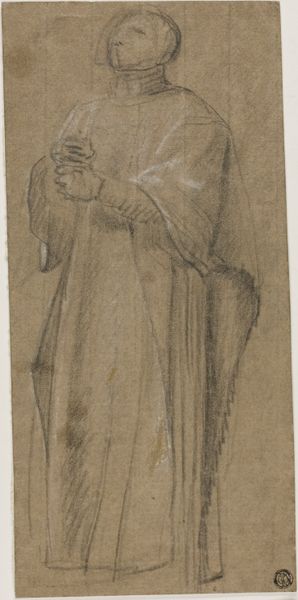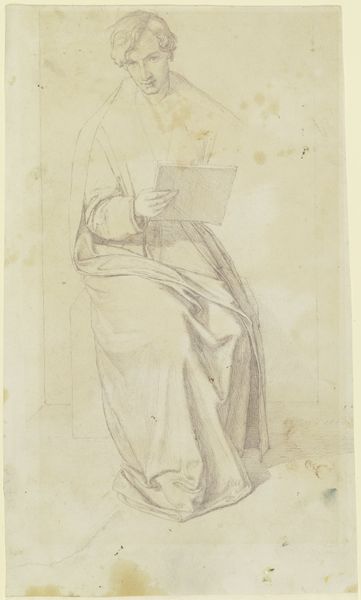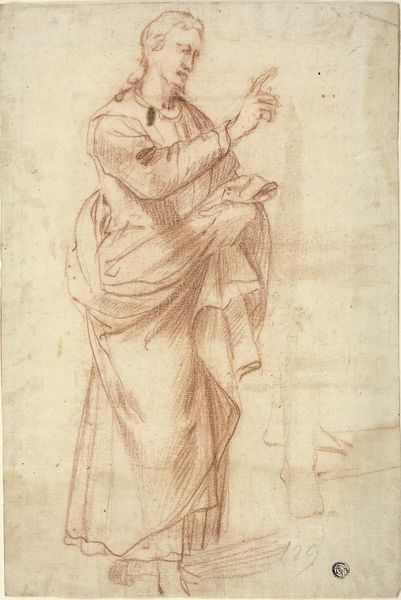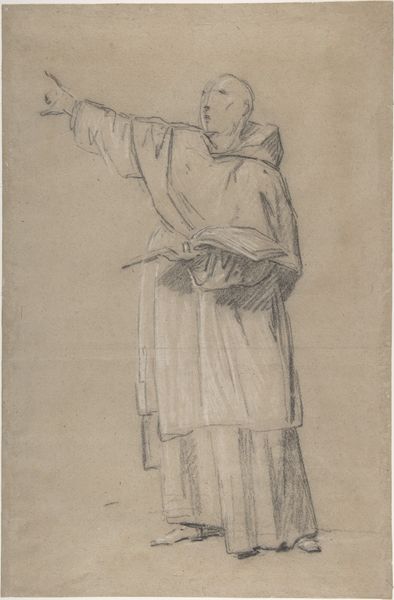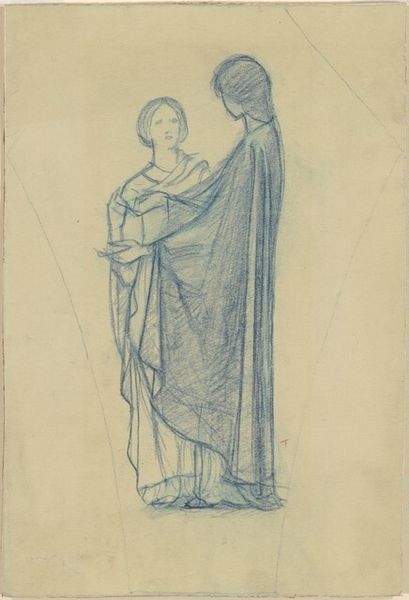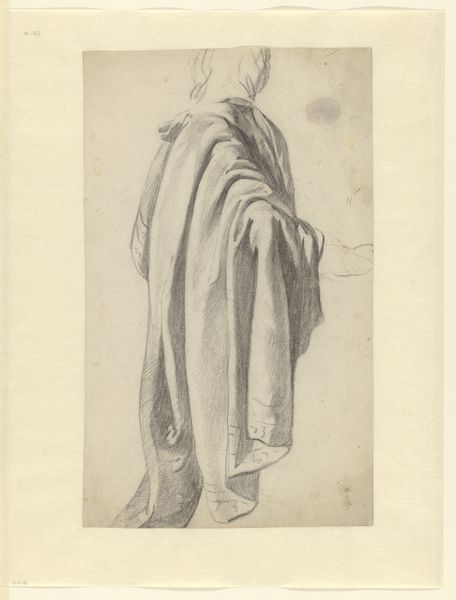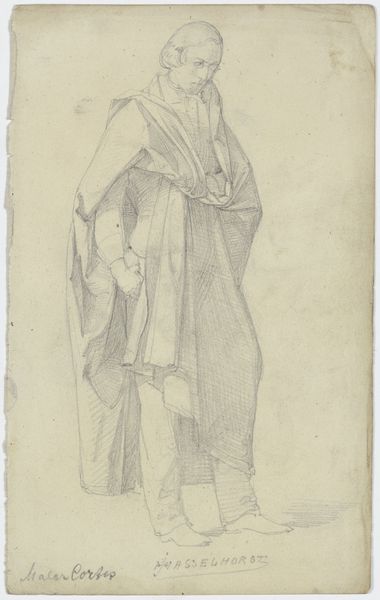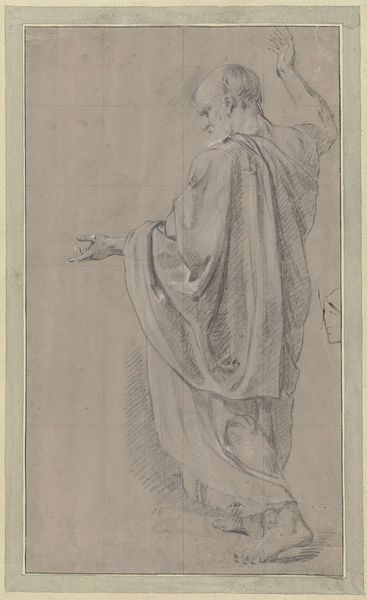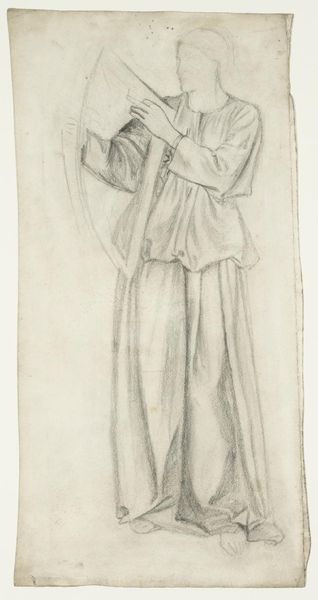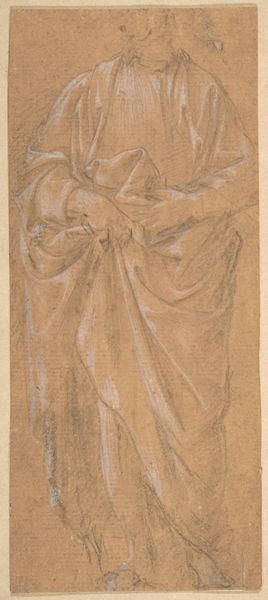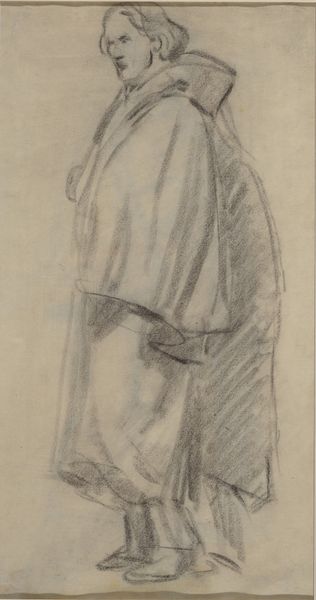
Cleric (lower register; study for wall paintings in the Chapel of Saint Remi, Sainte-Clotilde, Paris, 1858); black chalk landscape sketch on verso of support 1825 - 1875
0:00
0:00
drawing, pencil
#
drawing
#
figuration
#
pencil
#
history-painting
#
academic-art
Dimensions: 15 7/8 x 9 7/16 in. (40.4 x 24.0 cm); support: 18 3/4 x 12 1/4 in. (47.7 x 31.1 cm)
Copyright: Public Domain
Curator: This drawing is a study by Isidore Pils, created sometime between 1825 and 1875. It’s a study for the lower register of his wall paintings in the Chapel of Saint Remi, at Sainte-Clotilde, Paris. The medium is black chalk, with a landscape sketch on the reverse. Editor: It's stark. The limited tonal range of the black chalk, combined with the figure's isolated pose, lends it a solemn air, almost like a phantom emerging from the paper. Curator: Indeed. Considering its context as a preparatory study, this ghostly quality speaks volumes about the artist's process and the role of the clergy in mid-19th century France, amidst increasing secularization. The sketches offer insights into power structures and the church's visual rhetoric during that era. Editor: Precisely. Look at how the folds of the cleric’s robe are rendered. The heavy chiaroscuro creates depth and volume, transforming simple lines into tangible fabric that visually communicates authority, which links it to semiotics in general. Curator: Absolutely. Pils was deeply entrenched in academic art. One can argue that his aesthetic choices, seen here through the use of sharp lines and deliberate shading to create the folds, are a reflection of an ideology upholding traditional religious and political systems. The male figure, especially when elevated in this context, must be considered under patriarchy. Editor: And note how the minimal background—essentially just the blank paper—focuses all attention on the figure. This distillation serves to amplify its structural presence. Curator: A formal clarity that perhaps unintentionally underscores the isolation felt by religious figures. We can use this image to have broader intersectional narratives focusing on identity, class, gender, and politics. Editor: I'm struck by the confidence in the application of the medium and its effects. A testament to Pils' control and, of course, academic training, showcasing the possibilities that close formal analysis can achieve in extracting information from the piece. Curator: Indeed. It underscores the importance of looking closely at art—examining not just what is represented, but how those representations function within specific social and historical moments to offer insights for us in a contemporary context.
Comments
No comments
Be the first to comment and join the conversation on the ultimate creative platform.
